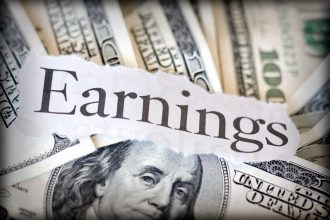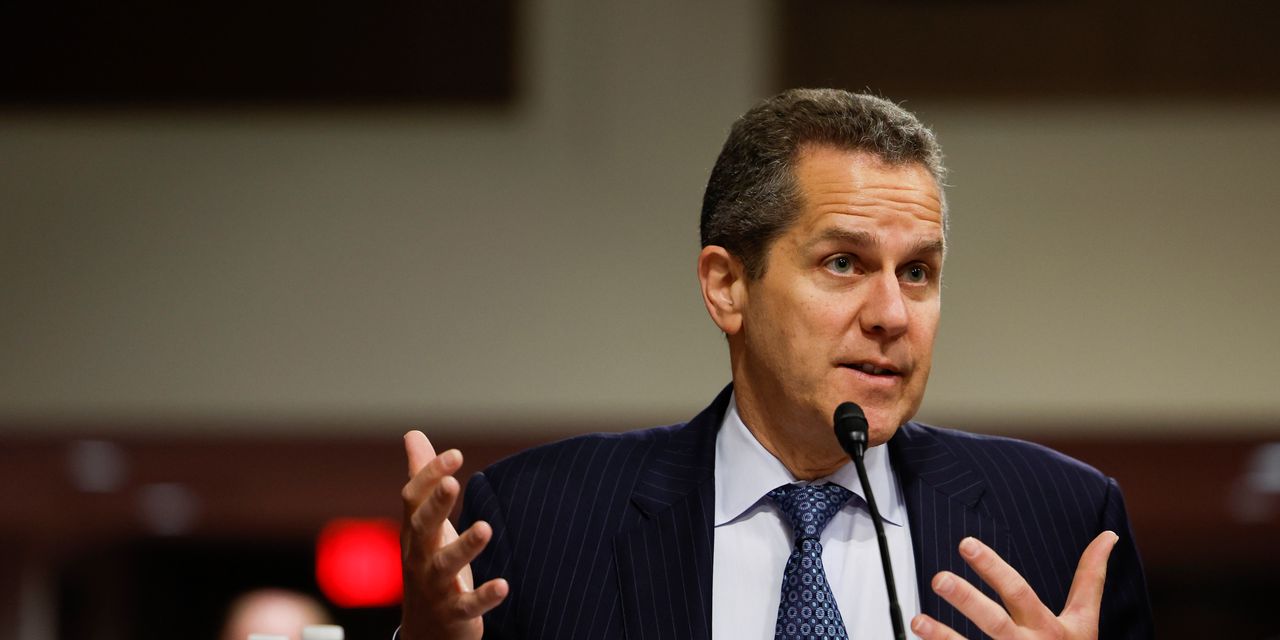The Federal Reserve’s chief bank regulator, Michael S. Barr, said the government should take into account more possible scenarios that could lead banks to fail, alongside its traditional method of stress testing banks.
In a possible hint about the results of this year’s round of bank stress tests, due to be released on Wednesday, Barr said the Fed needs to consider “reverse stress tests” to look at “different ways an institution can die” instead of simply submitting banks to a specific list of hypothetical hardships.
“We have to work harder at looking at patterns we haven’t seen before,” said Barr, who is also the Fed’s vice chair of supervision, at an appearance on Tuesday.
The stress tests, first introduced in the wake of the global financial crisis of 2008, are closely watched by Wall Street because they typically determine how much money banks should have on their balance sheets for hard times in their capital buffers and other pools of capital.
This in turn often determines how much money banks will have left over for dividends and stock buybacks for investors.
This year’s Fed stress tests are also taking on additional significance because of the failures of three banks that were components of the S&P 500
SPX,
this year: Silicon Valley Bank, Signature Bank and First Republic Bank. It’s also the first stress test for Barr, who was sworn in on July 19, 2022.
One of the main aggravating factors ahead of the recent bank failures was the reduced value of bank security portfolios following the Fed’s succession of interest-rate hikes over the past year. This problem is often described in the industry as the duration risk of potentially losing money on the value of lower-interest-paying securities at a time of rising rates.
Silicon Valley Bank was forced to sell securities at a loss to cover withdrawal requests from depositors, sparking a fatal run on the bank after it disclosed losses on the transactions. Another problem was the bank’s large amount of deposits that exceeded the $250,000 maximum for payouts by the Federal Deposit Insurance Corp. in the event of a bank failure. Fueled by quicker transactions through mobile-banking apps, uninsured depositors fled the bank at the speed of a click.
Last year’s stress tests did not focus on the effects of rising interest rates on bank security portfolios, partly because the Fed had expected a recession in the latter part of 2022 and 2023, with lower interest rates.
There has as yet been no recession, and interest rates have continued to rise.
Also read: Fed’s Barkin says he’s waiting for ‘haze to clear’ before deciding on need for more rate hikes
This year, experts say, it’s more likely that the Fed will study the effects of rapid interest-rate hikes and other factors that led to the failure of Silicon Valley Bank.
“It would make sense if the Fed wants to get a real picture, they could start with the actual value of a bank’s securities portfolio,” said Keith Noreika, former acting comptroller for the Office of the Comptroller of the Currency. Noreika is now an executive vice president and head of banking supervision and regulation at Patomak Global Partners.
The existing regulatory view on a bank’s longer-term investments known as held-to-maturity (HTM) assets is that they’re valued at their historic cost, not their current market value.
On shorter-term investments — known as available-for-sale (AVS) securities — banks may or may not have mark-to-market disclosure requirements, depending on whether a bank made an Accumulated Other Comprehensive Income election in 2015. This opt-out was available at that time for smaller banks, and Silicon Valley Bank and others were grandfathered into it. Silicon Valley Bank was subjected to some stress tests in 2022 under different guidelines because of this.
Most banking rules exist because there are nontransparent assets on balance sheets — mainly loans — and regulators want to give the public confidence that the loans are backed by actual assets, Noreika said.
Part of the bank troubles that happened earlier this year dealt was the more transparent issue of the amount of insured deposits on a bank’s balance sheet. In his closely watched annual letter to shareholders, JPMorgan Chase & Co.
JPM,
CEO Jamie Dimon said such problems were hiding in plain sight.
“Interest rate exposure, the fair value of held-to-maturity (HTM) portfolios and the amount of SVB’s uninsured deposits were always known — both to regulators and the marketplace,” Dimon said.
“That’s the issue with stress tests. They’re not omnipotent,” said Noreika. “They don’t have clairvoyance. A lot of their scenarios have not matched reality. They’ve sent people off scurrying in different directions. Even if they looked at the marked-to-market value of bank securities [this year], it’s more like closing the barn door after the horses have gone.”
With an eye toward the stress-test statements from the Fed this coming Wednesday, KBW analyst David Konrad said in a Thursday research note that he does not expect any “huge surprises” from this year’s tests, because banks are already signaling that their stock buybacks will be modest due to economic uncertainty and pending capital requirements under the international Basel III banking rules.
Also read: FDIC studying plan to include smaller U.S. banks in Basel III capital requirements after failures in early 2023
KBW projects that big universal banks, particularly Morgan Stanley
MS,
will have lower stress capital buffers and expects “modest increases” for Citizens Financial Group Inc.
CFG,
PNC Financial Services Group Inc.
PNC,
and Truist Financial Corp.
TFC,
due to expectations for higher losses in commercial real estate and their consumer businesses.
KBW expects M&T Bank Corp.
MTB,
to have the strongest results, with a roughly 1% decline in its stress capital buffers “owing to a modest mix shift and better pre-provision net revenue from lower cash balances,” KBW’s Konrad said.
Tomasz Piskorski, a professor of real estate at Columbia Business School, said he expects federal regulators to look more closely at stresses related to interest-rate risk, portfolio value declines, and the risk of skittish uninsured depositors moving their money out of banks.
It’s also important for the Fed to look not only at the asset side of the balance sheet, but also at liabilities — namely uninsured deposits, he said.
“A good number of banks in the U.S. are at the mercy of their depositors,” Piskorski said. “They are still vulnerable to selling assets at a loss. There is a path of exiting this, but it’s a very tricky path.”
That path would include a pickup in the economy, a pause in the Fed’s interest-rate hikes and successful management of any office-space-loan stress within commercial-real-estate loan portfolios. But if another bank fails, it could spark depositor fears again, he said.
One bank that has seen its share price fall sharply this year on investor jitters is PacWest Bancorp
PACW,
but the stock has been more stable in recent weeks.
About 1,600 banks would fail if all $9 trillion of uninsured deposits were withdrawn from the U.S. banking system, Piskorski said. If half that money were pulled out, about 186 banks would fail, according to research cited by Piskorski.
Dozens of banks would have failed if the Fed and the FDIC had not acted in March and April to back insured deposits and sell the ailing banks, he said.
In deals brokered by the FDIC, First Citizens Bancshares Inc.
FCNCA,
bought Silicon Valley Bank, New York Community Bancorp Inc.
NYCB,
acquired Signature Bank and JPMorgan Chase bought First Republic Bank in early May.
Since then, jittery depositors have started to calm down.
But regional banks continue to face fundamental problems, including a lack of capital to cover uninsured deposits, the high amount of leverage by banks that makes lending institutions more vulnerable to withdrawals by uninsured depositors, and the reduced value of their securities portfolios.
According to a paper co-written by Piskorski and three other professors, the value of bank assets is about $2 trillion lower than suggested by their book value of assets accounting for loan portfolios held to maturity, and about half of U.S. banks now have a current value of assets that is less than the face value of their liabilities.
That doesn’t necessarily mean the banks are insolvent, but banks financed with larger portions of uninsured deposits could face solvency problems from uninsured depositors who don’t want to lose their money should a bank fail.
“I’m not into doomsday scenarios, but there is a significant risk” of more bank failures, Piskorski said. “Regional banks will be under pressure for the foreseeable future.”
From the archives (June 2022): Fed stress test: Fed says banks could withstand 10% unemployment, 55% stock price drop in annual stress test
Read the full article here




